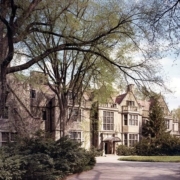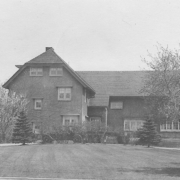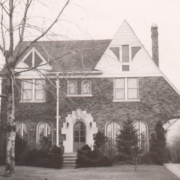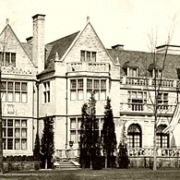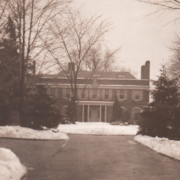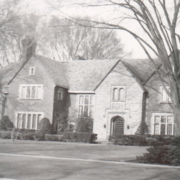Historical Architecture of Grosse Pointe – The Stonehurst Estate – The Old and The New
Last week we went to one of the more prominent streets in Grosse Pointe City to explore 333 Washington. Completed, in 1913, it was designed by Rogers & Bonnah for William B. Colburn.
This week we are going to bring you the story of the Stonehurst Estate, the old and the new – the original home that was located on the property, and the new residences that have subsequently taken its place.
The Old
The history of 500 Lake Shore dates back to 1917 when renowned Pittsburgh architects Francis McClure and Albert H. Spahr completed the early English Renaissance “castle” for Joseph Schlotman and his new wife Stella Ford. Supposedly the imposing stone mansion cost an estimated $2m to build (around $51m today). The 40-room house, situated on a 30-acre estate, was immense and no expense was spared in creating a luxurious place for the couple. Source and image: Grosse Pointe Historical Society.


Upon entering the property through heavy wrought iron doors, twin marble steps ascended into the great hall with its carved oak panels, ornate ceilings and grand staircase. Just off the great hall was the atrium constructed of marble and stone that also contained a bronze nymph fountain. At the east side of the atrium was a formal dining room, a breakfast room, and at the opposite side was a paneled library, a sun porch and a music room. The walls of the music room were paneled with oak, reportedly removed from a stately home in Europe, shipped and reassembled at Stonehurst, in 1917, at a reputed cost of $100,000 (around $2.5m today).






All five bedrooms on the second floor contained baths and fireplaces; a sitting room was located off the master suite for Mrs. Scholtman. The lower floor featured a large ballroom, while the maids quarters were located on the third floor. Along with the lavish use of wood the house was also filled with beautiful decorative details such as a hand crafted tapestry (measuring 5’ x 7’ depicting the gardens of Stonehurst, it took Mrs. Scholtman 4 years to complete) paintings and oriental rugs. The formal gardens included a terrace, pond, a huge greenhouse, a seven-car garage, along with living quarters for the head gardener and chauffeur. Source: Grosse Pointe Historical Society.



Joseph Schlotman passed in 1951. His wife Stella remained in the property until she passed, in 1974 aged 95. Many of the rooms reportedly remained unchanged since the house was built, and up until her death she had a staff of over twelve. In February 1974, the house was opened up to the public for a final look at the property. That same year the contents, fixtures, and valuable materials were auctioned off in April and shortly afterward, after 57 years, Stonehurst was demolished. The land was subsequently subdivided. Source: Grosse Pointe Historical Society. Historic images are courtesy of Balthazar Korab, and the Grosse Pointe Historical Society.
The New
Even though Stonehurst was razed part of the property reportedly still exists today – the long, low stonewall that runs along Lake Shore – beginning at the corner of Woodland Shore Drive. The wall creates an elegant boundary for four properties – 501, 503, 505 and 507 Lake Shore. Each of these contemporary homes has their own unique identity.
The first, 501 Lake Shore was built the same year when Stonehurt was razed, while the three other properties were created over an extended period of time – from 1977 through to 1992. One has already been demolished and replaced, while the other three have received significant alterations.
In 1974, 501 Lake Shore, was the first home to be completed on the former estate. The contemporary style property, located on a 121’ x 316’ sq ft lot, was designed and built by William F. Baker, (Cox & Baker) for Mr. and Mrs. Al Nick. Over the years the home has undergone extensive renovations to create a five-bedroom, 7,600 sq ft residence. It is not clear how big the home originally was, or how it looked when it was first completed. Image courtesy of: Zillow.
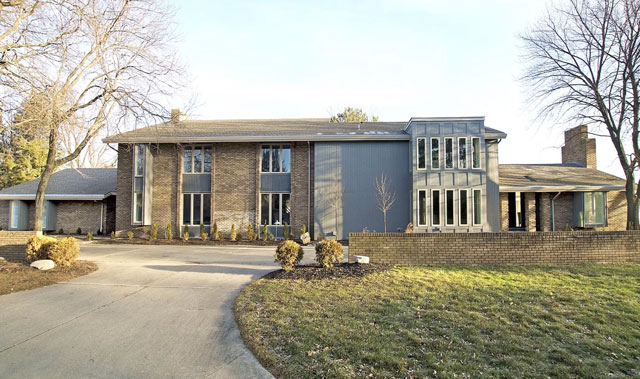
In 1977, 507 Lake Shore was the second home to be built. The house was a sprawling 9,500 sq ft Italian style villa situated on a large 211’ x 281’ sq ft lot. It is not clear who the architect was, but it appears it was built for Pietro (Pete) Gandolfo. The uniquely styled Mediterranean mansion was white stucco with a red tile roof. The front elevation was dominated by a multitude of arched windows, which made the most of the stunning views of the lake. The first floor featured a number of rooms, each room was generously sized, including a grand circular 32’ sq ft front room, a 18’ x 27’ sq ft living room, a 14’ x 15’ sq ft dining room, and a 20’ x 15’ sq ft “L’ shaped kitchen. Also on the first floor were two bedrooms – the largest was 20’ x 15 sq ft, while the second floor contained three additional bedrooms. The home also featured a substantial “L” shaped indoor swimming pool, sauna and wet bar, which were located in a huge 50’ x 68’ sq ft room. Shortly after Mr. Gandolfo and his wife moved into the property the couple relocated to Boca Raton for health reasons and the house was listed for sale, in 1979, for $990,000 (around $3.5m today). The property subsequently sold in 1984, for a rumored $590,000. It was listed for sale in 1998, for close to $2m and demolished later that year.

After 507 Lake Shore was razed the land was sub divided, and two new properties were built – 505 Lake Shore, completed in 1999, and a new 507 Lake Shore (date of completion is not known) which allegedly still retains the former Stonehurst estate entrance gates. Images courtesy of: estately.net and google.com
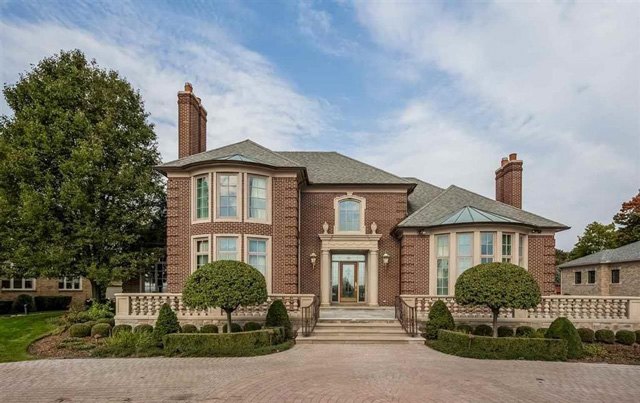
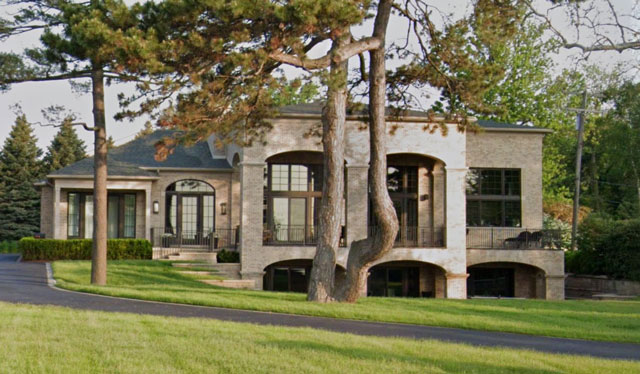
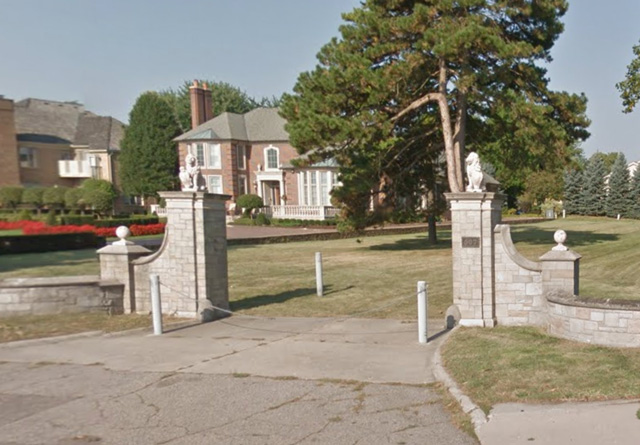
Meanwhile, the contemporary styled 503 Lake Shore, was completed in 1992. It was also designed and built by Cox & Baker for Dr. and Mrs. Rahi. Image: courtesy of google.com.
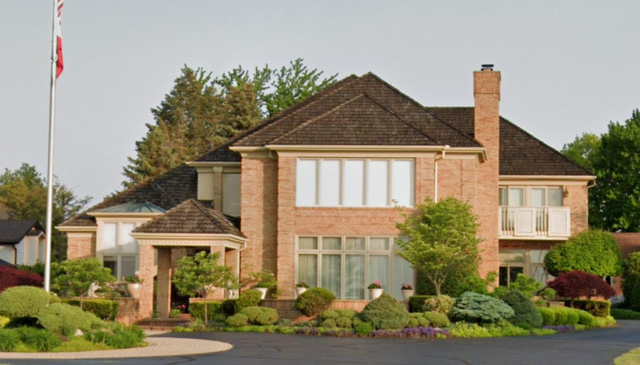
The Stonehurst Estate was a beautiful home, located on a spectacular piece of property. While the residence is just a distant memory, four contemporary homes live on, along with part of the original wall, and possibly the entrance gates that once surrounded the early English Renaissance “castle”.
*Photos courtesy of the Higbie Maxon Agney archives unless stated.
Written by Katie Doelle
Copyright © 2020 Katie Doelle

